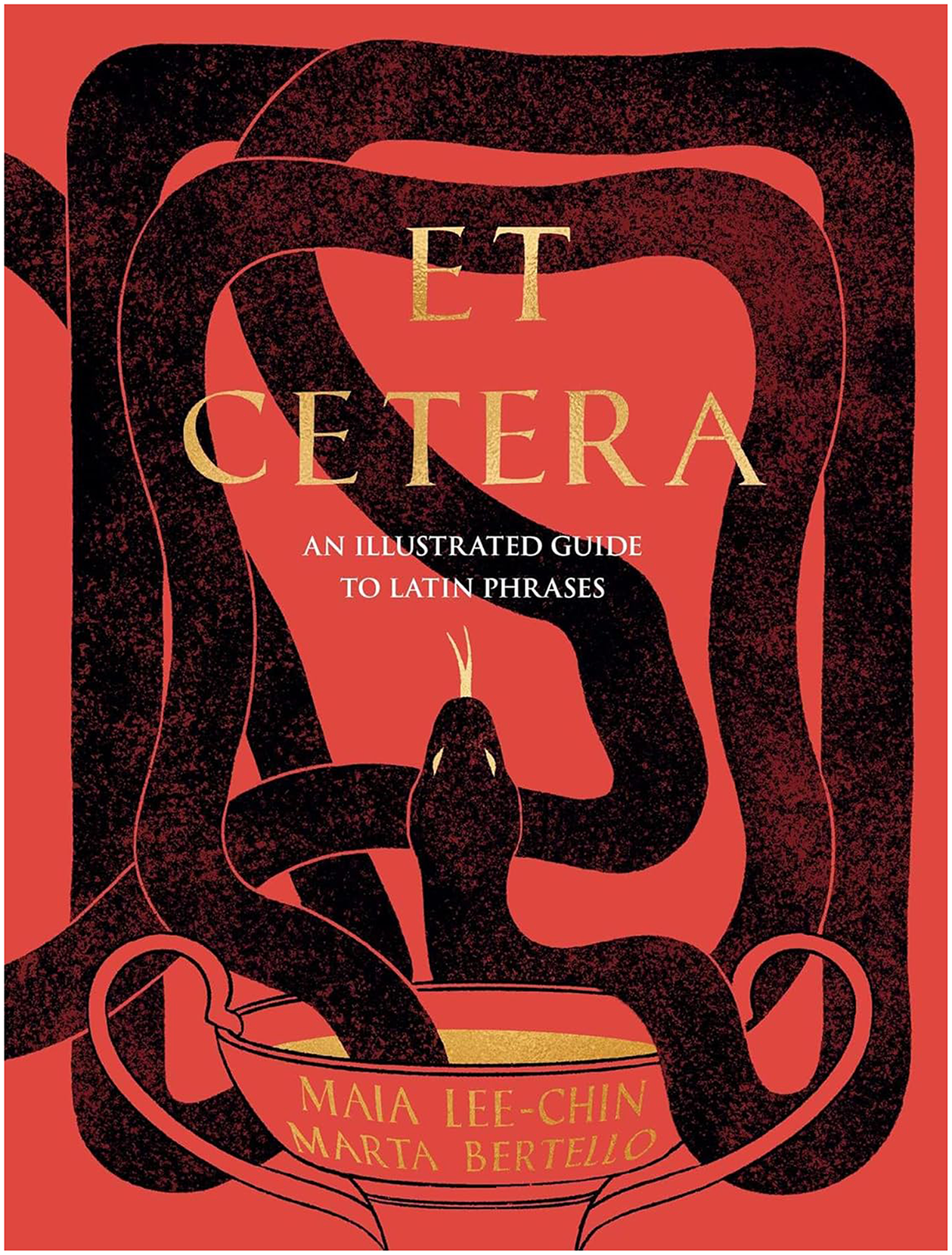
This charming libellus is the latest in a long series of Latin quotation and phrase books, among them Henry Beard’s Latin for All Occasions, Latin for Even More Occasions, and X-Treme Latin: All the Latin You Need to Know for Survival in the 21st Century; Eugene Ehrlich’s Amo, Amas, Amat and More and Veni, Vidi, Vici; Jon R. Stone’s Latin for the Illiterati: A Modern Guide to an Ancient Language; Rose Williams’ Latin Quips at Your Fingertips; and many others.
Several features distinguish this latest contribution to the genre. First, instead of hundreds of adages and quotations, there are only 50, some quite familiar but often misunderstood, others little known but worthy of knowing, and most drawn from the Late Republic and Early Empire. Each selection is presented with an illustration on the verso page by Lee-Chin’s collaborator Marta Bertello, and on the facing recto with the Latin quotation and discussion.
They are arranged, as the author puts it, in a sort of Ovidian ‘carmen perpetuum, a continual narrative’, and smartly grouped into these five thematic categories: LITERATURE (including such quotes as Erasmus’ cantio cygnea and Juvenal’s satura quidem tota nostra est), LOVE, FRIENDSHIP, AND FAMILY (e.g. Catullus’ odi et amo and Sulpicia’s sed pecasse iuvat), MYTHOLOGY (e.g. Terence’s lupus in fabula and Vergil’s equo ne credite…timeo Danaos et dona ferentes), MILITARY AND POWER (Caesar’s alea iacta est and Horace’s dulce et decorum est pro patria mori), and CULTURE AND PHILOSOPHY (Petronius’ sol omnibus lucet and Horace’s carpe diem – which, happily, Lee-Chin’s discussion makes clear means ‘harvest the day’ more exactly than ‘seize’ it).
Each of the volume’s five sections opens with an epigraph by a modern writer, most of them women or African Americans, in keeping with the author’s declaration, ‘I am a Black and Chinese woman…and I explore the ancient world through these lenses’. Among the book’s virtues are the perspectives Lee-Chin’s lenses help us appreciate.
The volume opens with a wondrous quote from Nobel laureate Toni Morrison: ‘We die. That may be the meaning of life. But we do language. That may be the measure of our lives’.
I am wholly in sympathy with Morrison’s view, and Lee-Chin’s motive for this book. Nearly every semester of my 40 years teaching at the University of Georgia, with a fresh group of learners in my introductory Latin classes, I’d take a moment a week or two into the class to explain what I actually aimed to teach them.
With a ‘dramatic’ flourish, I’d stride to the classroom door, which I always kept open to the hallway for the benefit of any Latin eavesdroppers passing by, and quietly close it. I did so, I’d tell my kids, so the Dean wouldn’t hear my confession, my profession. Teaching them Latin, as the Dean thought he had employed me to do, was of joyful import to me, but not my primary objective. Rather, my hope was to profess to them the single most important subject they’d be exposed to at the university.
PHILOLOGY: I’d ceremoniously inscribe the word on the board, then ask the students if any of them knew what it meant. Tolle manum, I’d say, and usually two or three would raise their hands. PHIL-, as in PHILanthropy, most of them knew. And the definition of that LOG- root, from Greek logos, and source of our word LOGic, that I had in mind and shared with the class was this: the logical, rational, even artful employ of language. Nothing else they would ever study would be more valuable to them than this ‘love of language’, thoughtfully wrought to express our most human, and humane, endeavours. Clearly Lee-Chin and Bertello share this objective of teaching and learning.
Their book’s front matter includes a map of the Roman Empire, a timeline for the Roman authors quoted, and an Introduction with an explication of the volume’s raison d’etre and tips on how best to use it. The back matter provides a bibliography and index.
You’ll enjoy this slender volume yourself, whether a novice or veteran Latinist, and it would make a lovely gift for a family member or friend interested in the wisdom of the ancients, as viewed through this creative young author’s fresh, modern lens.


